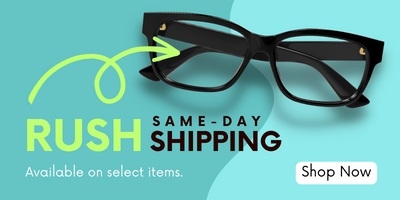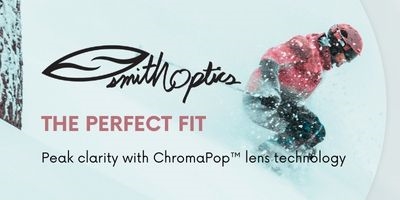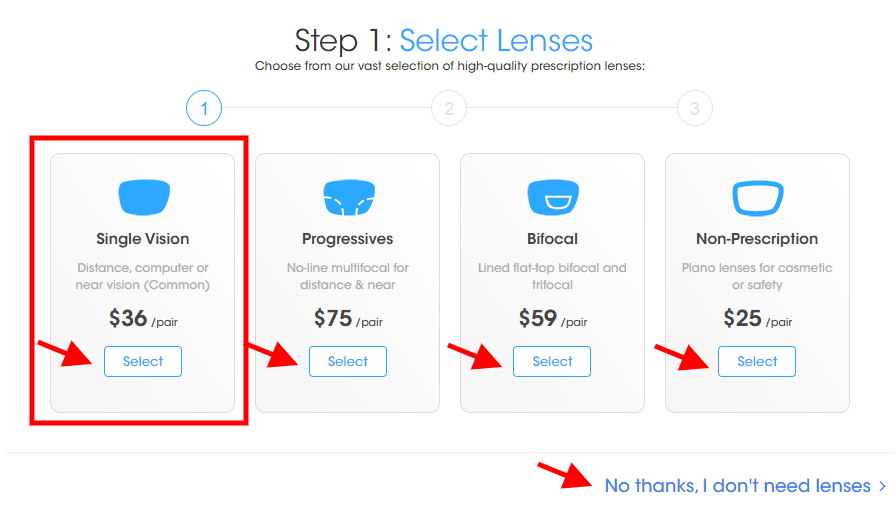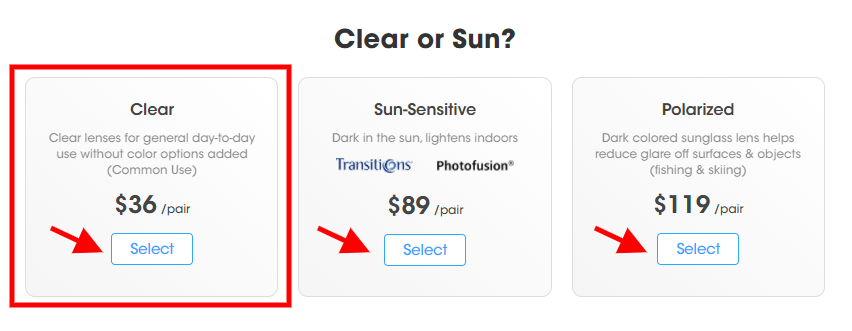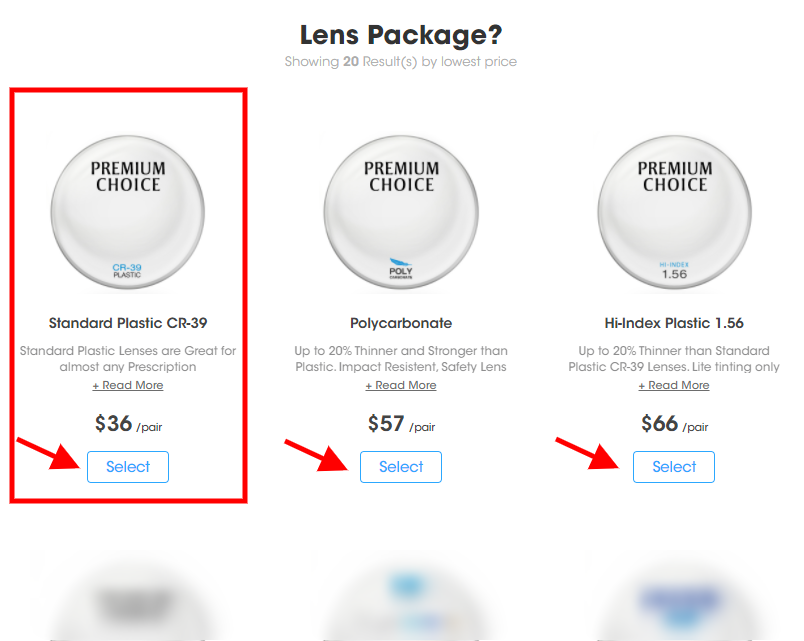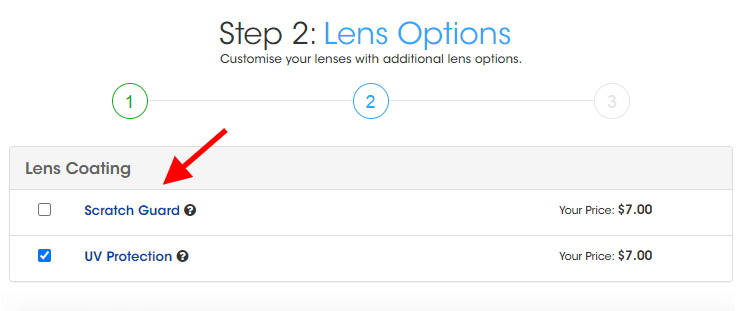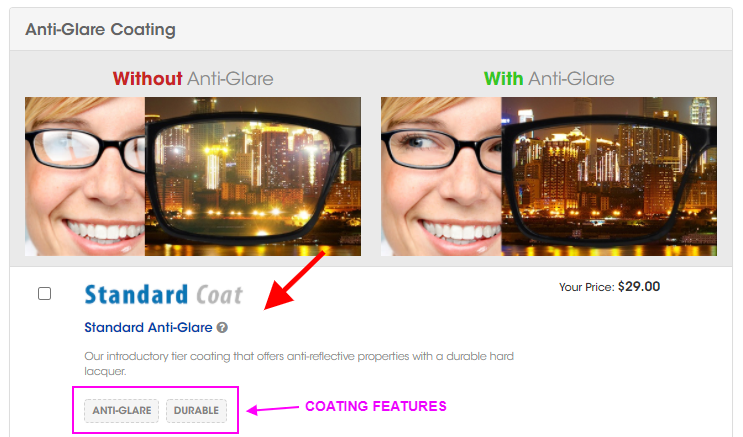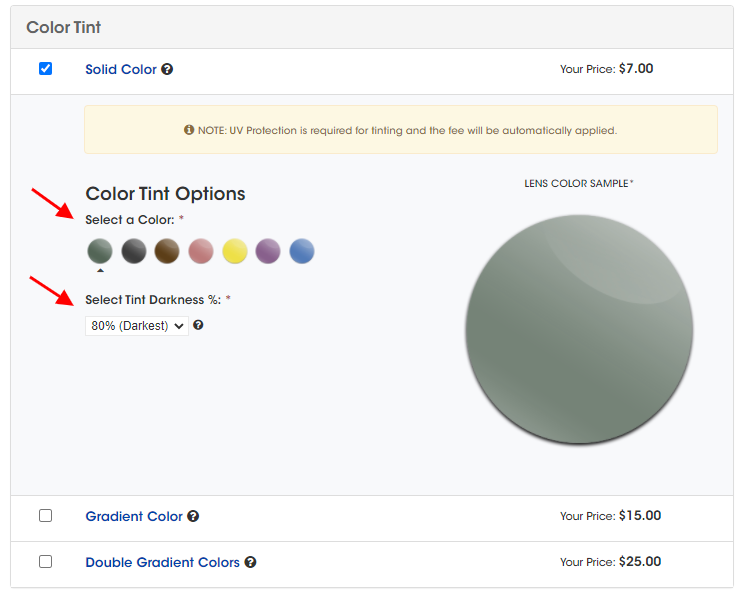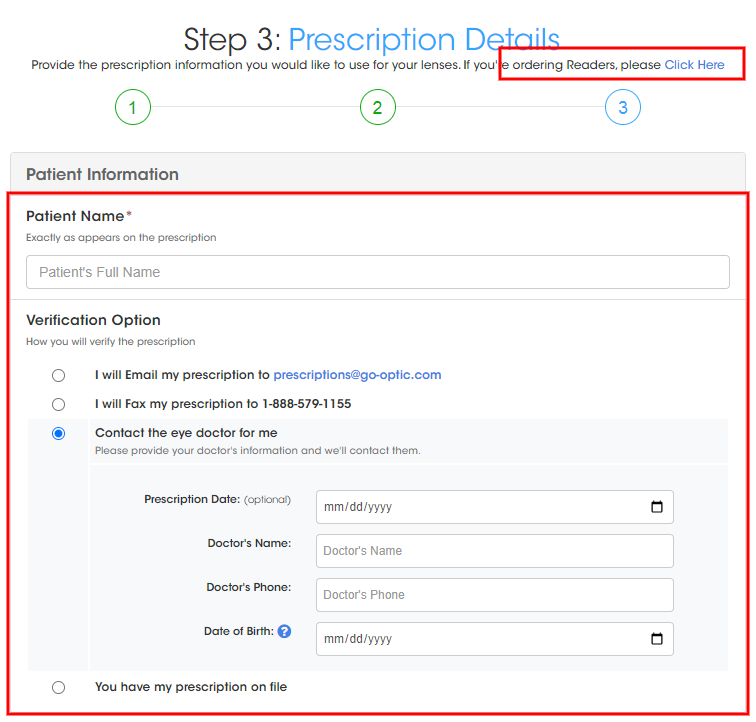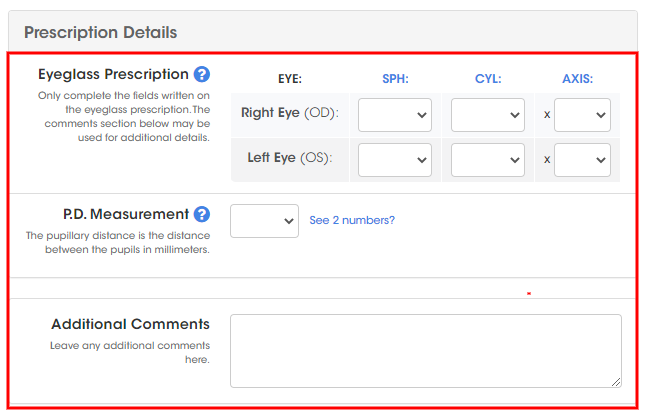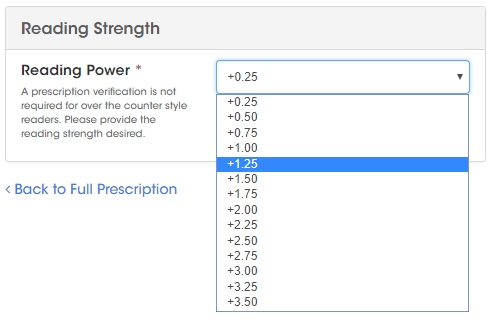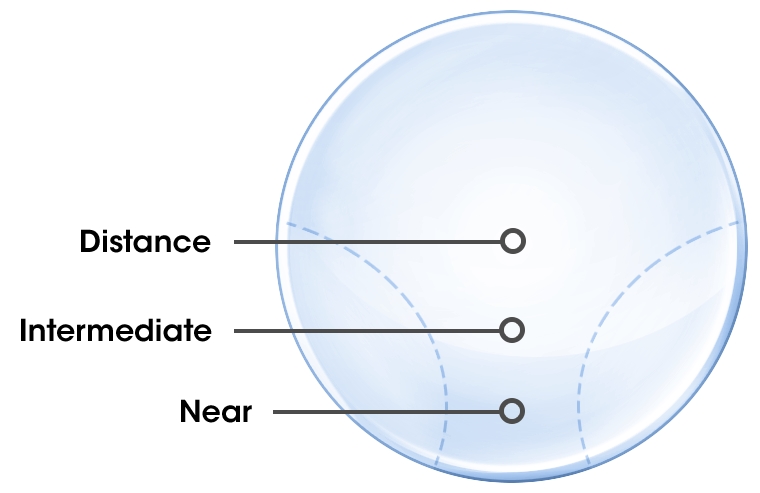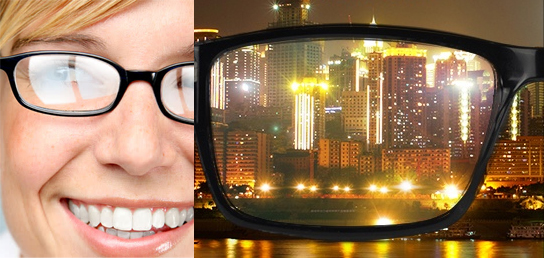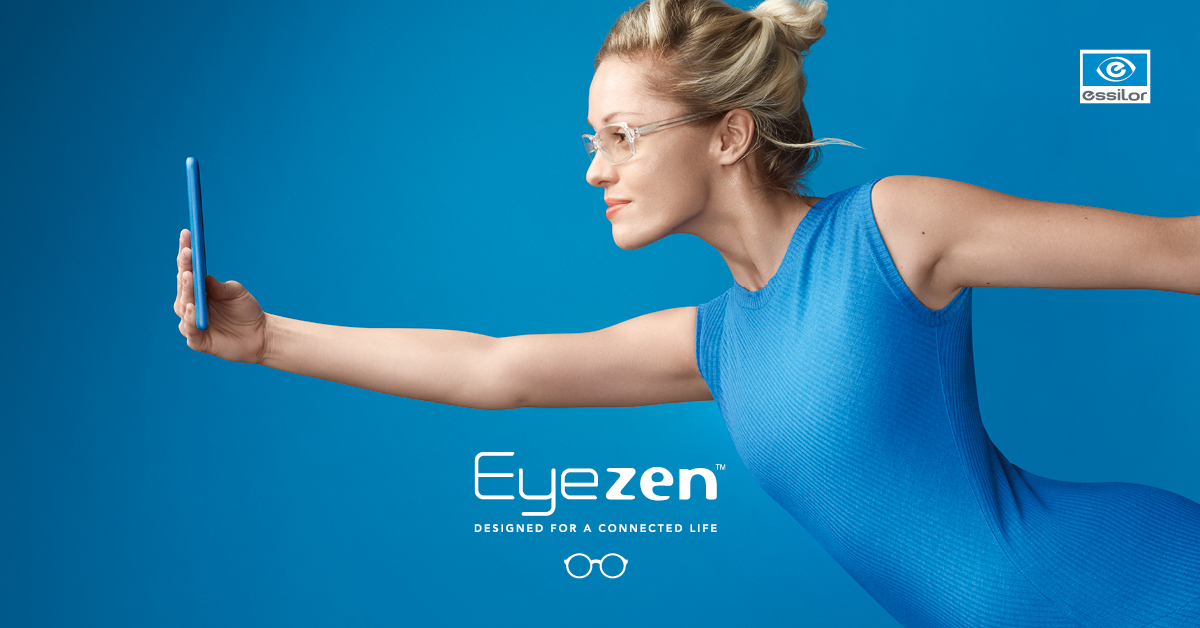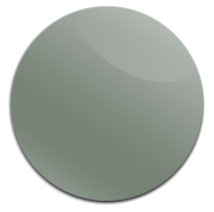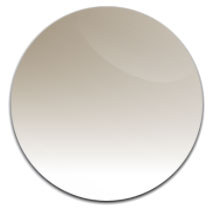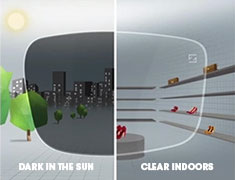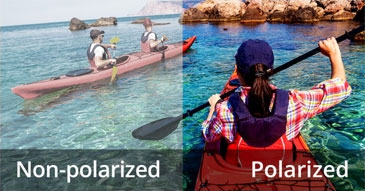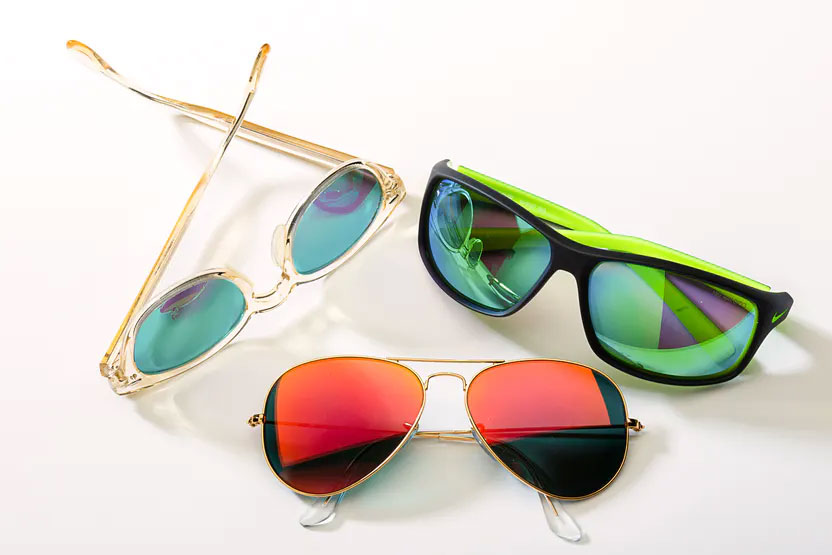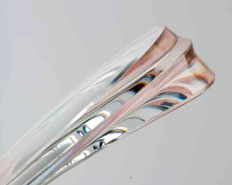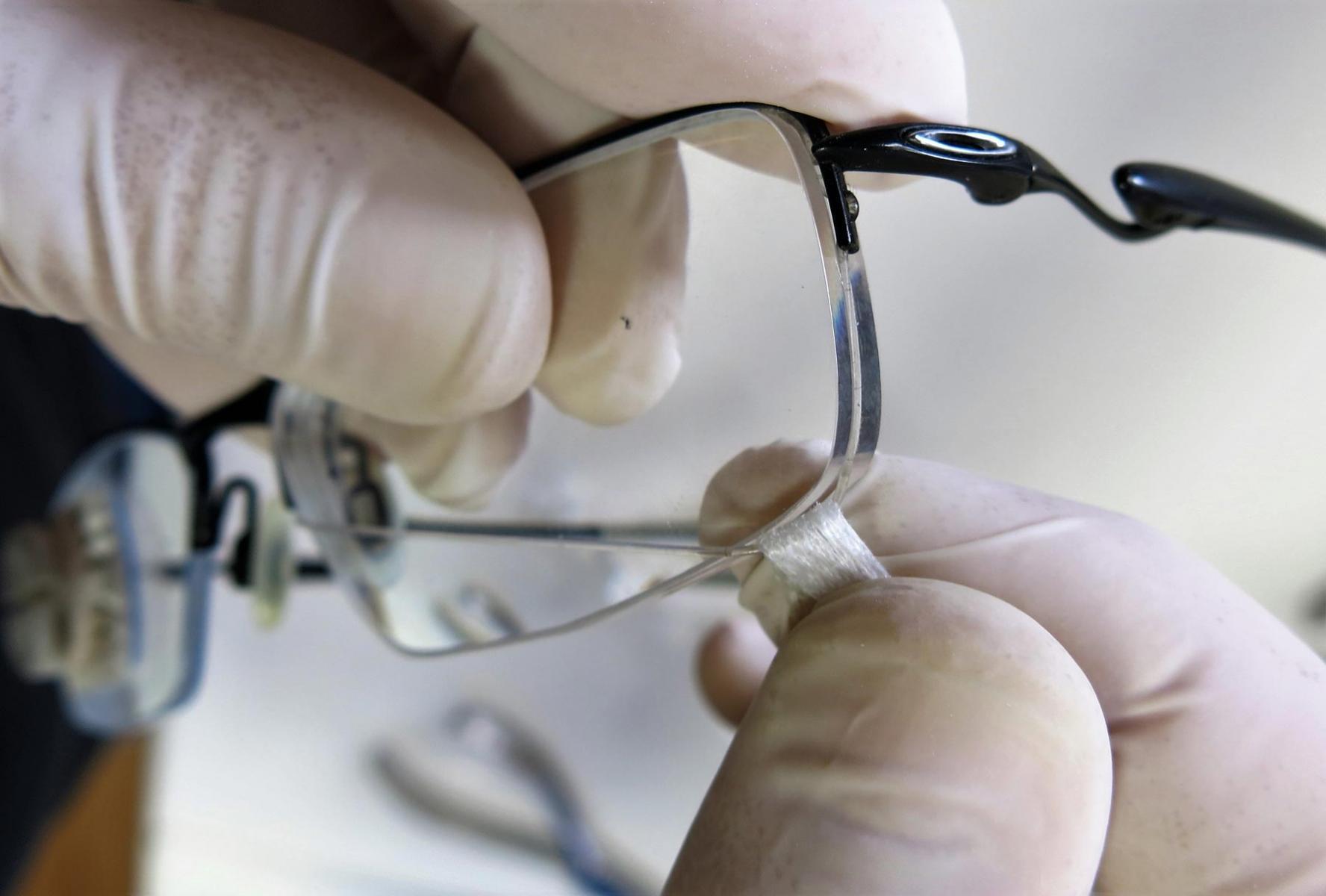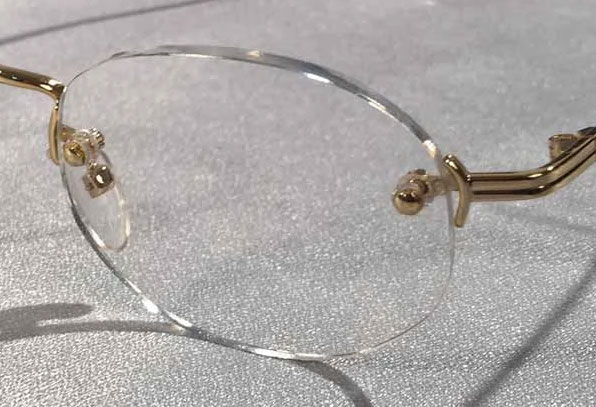Add lenses to your frames using the self-help online lens ordering tool. The following information explains the steps for adding lenses to the order using the online self-help tool:
Step 1: Select Frame
Click the "Add Lenses" button on the frame order page to get started with adding lenses to the order. This option is only available for Rx Eligible Eyewear.
Step 2: Select Lenses
Note: Lens options may vary based on the frame type selected. Lenses added will not inherit the features or colors of the default stock/demo lenses that are included with the frame. A sun tinted lens will need to be selected if intending to order sunglasses.
Navigate through the lens types available, then select the lens package desired from the results to continue to the lens options page. Alternatively, select the "No Thanks" option at the bottom if you do not want to add lenses.
Related: How to Choose the Best Lenses
Step 3: Lens Options
Enhance the selected lens package by adding optional lens coating options or color tinting. Lens options and coatings may vary based on the lens package selected. Color tinting is only available for eligible clear lenses.
Related: Lens Coating Options
Step 4: Prescription Details
Note: This step does not apply when ordering non-prescription lenses.
Provide the patient and prescription verification details to proceed to the shopping cart. Alternatively, click the link shown at the top of the page if ordering readers.
1. Patient Verification or Readers
Enter the patient's name and select the verification option for the prescription or click the link at the top for ordering readers. View the Prescription Verifications Page for details.
2. Prescription Parameters
Input the eyeglass prescription if desired, but it's not necessary. Any errors, empty fields will be corrected upon verification of the prescription. A PD measurement is required for all lens orders to ensure accuracy. Provide any special instructions such as the 'Seg Height' in the Additional Comments section.
Proceed to the checkout page from the shopping cart to complete the lens order.

